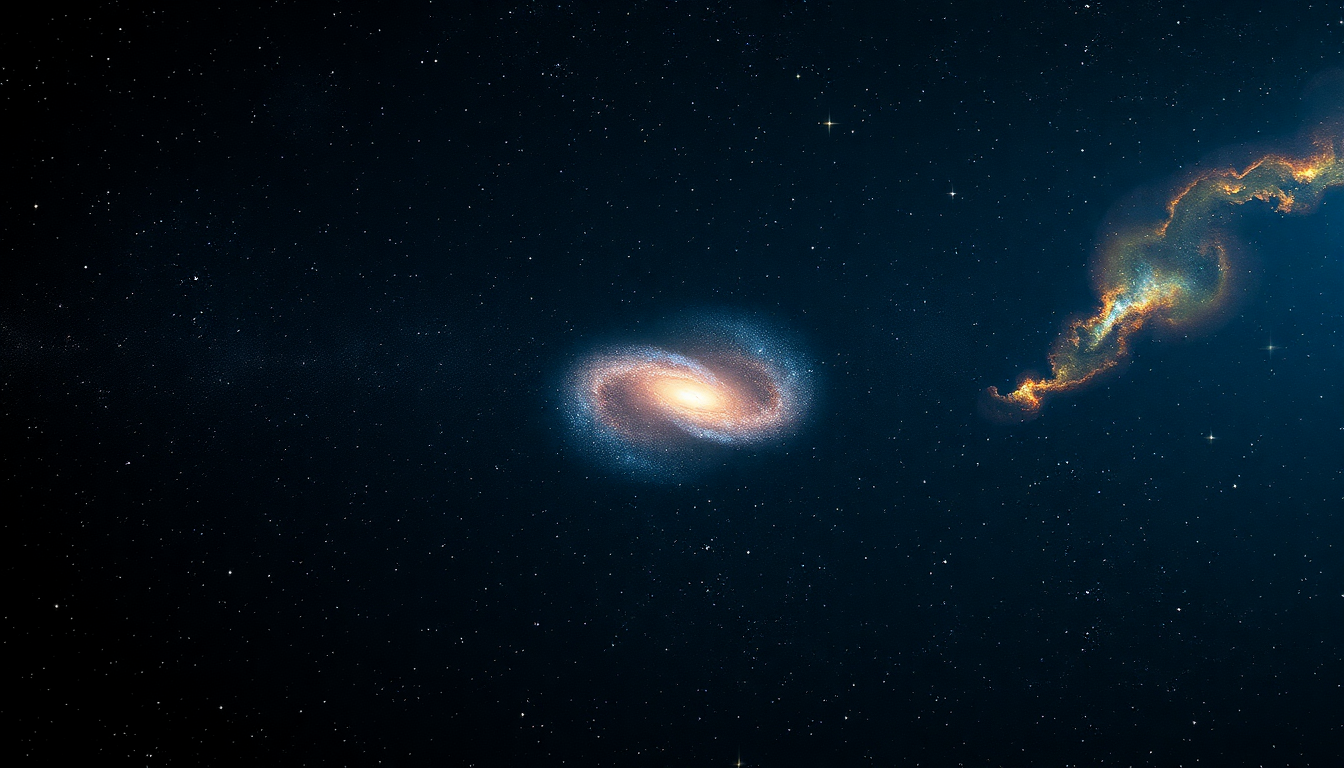Table of Contents
Imagine peering into the cosmos and uncovering something that could rewrite our understanding of galaxies. Well, a team of astronomers from Italy has done just that! They’ve discovered a fossil galaxy, dubbed KiDS J0842+0059, located an astonishing 3 billion light-years away from Earth. This groundbreaking find not only marks the most distant fossil galaxy identified outside our local universe but also opens exciting avenues for research into how galaxies form and evolve.
Unveiling KiDS J0842+0059
So, how did this remarkable discovery come about? The Italian National Institute for Astrophysics leveraged the incredible capabilities of the Large Binocular Telescope on Mount Graham in Arizona. This cutting-edge telescope is specifically designed to observe celestial bodies far beyond our solar system, allowing astronomers to gather invaluable data from the farthest corners of the universe.
But here’s the catch: observing these distant galaxies isn’t as simple as flipping a switch. The light from these ancient entities takes billions of years to reach us, and various cosmic factors can obscure or distort our ability to detect them. According to Crescenzo Tortora, one of the researchers on the team, relic galaxies like KiDS J0842+0059 are extremely rare because they haven’t merged with other galaxies, allowing them to remain intact over the eons. Isn’t that fascinating?
The Nature of Fossil Galaxies
What exactly makes these fossil galaxies so special? Chiara Spiniello, another researcher involved in the study, explains that the formation of a galaxy usually kicks off with an initial burst of star formation, which leads to the creation of what we now recognize as a relic. These unique galaxies formed a significant portion of their mass during the universe’s early stages, effectively skipping the later phases where interactions with neighboring galaxies usually take place. Can you imagine the history embedded in these ancient stars?
This second phase is crucial because it’s during this time that galaxies may collide, merge, or absorb one another, resulting in significant changes to their structure and stellar populations. In stark contrast, fossil galaxies like KiDS J0842+0059 are characterized by their ancient, compact, and dense nature. They contain billions of stars—many comparable in size to our sun—but they don’t form new stars, serving instead as fossil records from the universe’s infancy.
Questions About Cosmic Isolation
Now, why are these fossil galaxies so isolated? That’s a question that continues to baffle scientists. Some researchers speculate that supermassive black holes within these galaxies may have generated powerful winds, preventing new star formation and isolating them from potential cosmic interactions. Isn’t it intriguing to think about the forces at play in the universe?
When we observe KiDS J0842+0059 from Earth, we’re actually catching a glimpse of it as it was 3 billion years ago, providing a direct portal into the distant past of our universe. Spiniello hopes this captivating galaxy will remain unchanged, yet acknowledges the uncertainty surrounding cosmic evolution. What secrets might it still hold?
Conclusion: Implications for Astrophysics
The discovery of KiDS J0842+0059 enriches our understanding of galaxy formation and raises new questions about the universe’s nature. As astronomers continue to study these ancient galaxies, they may uncover insights that challenge existing theories and deepen our cosmic knowledge. The ongoing exploration of such distant and enigmatic entities reminds us of space’s vastness and the mysteries still waiting to be discovered. Are you ready to embrace the wonders of the universe?


